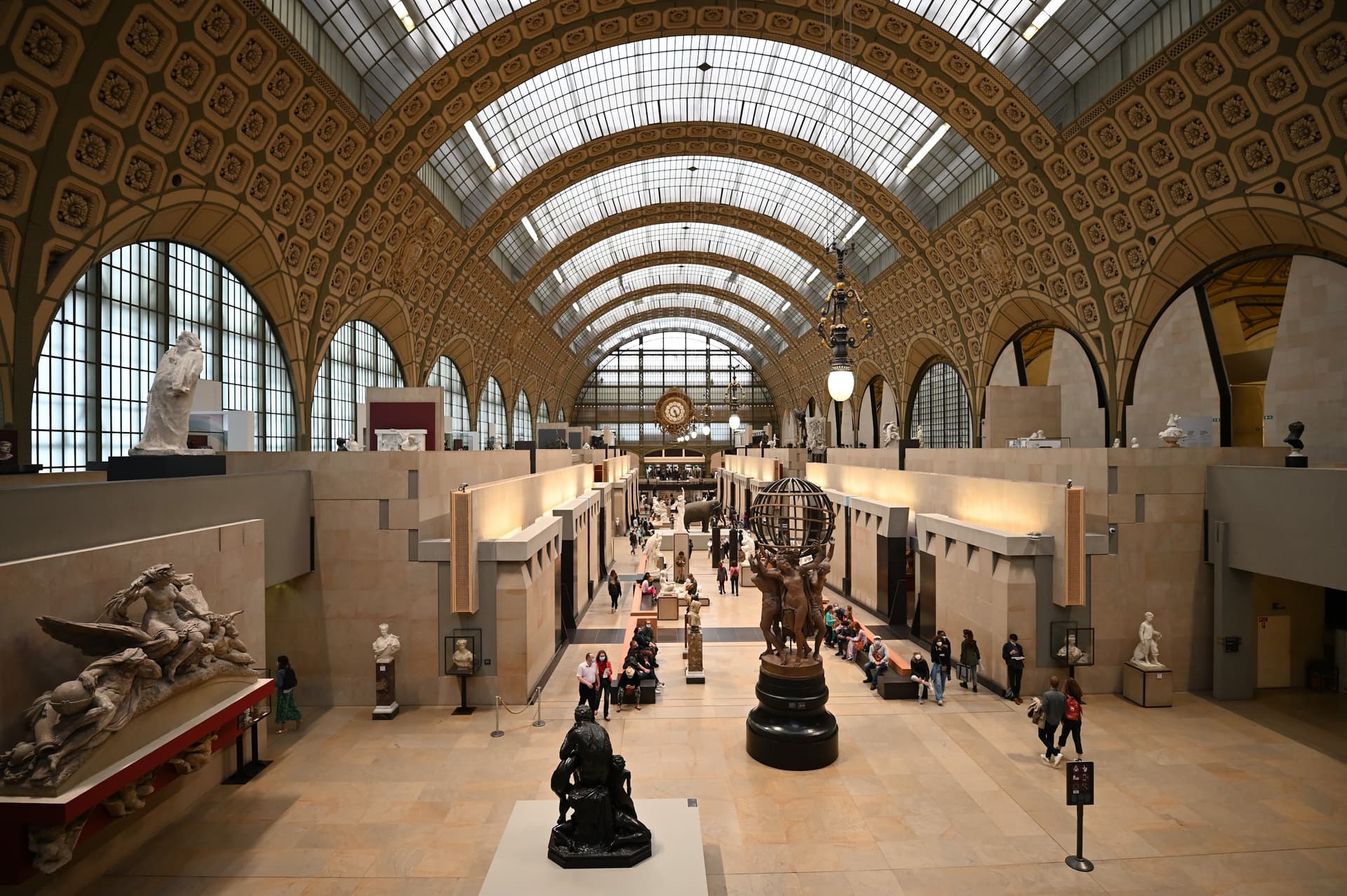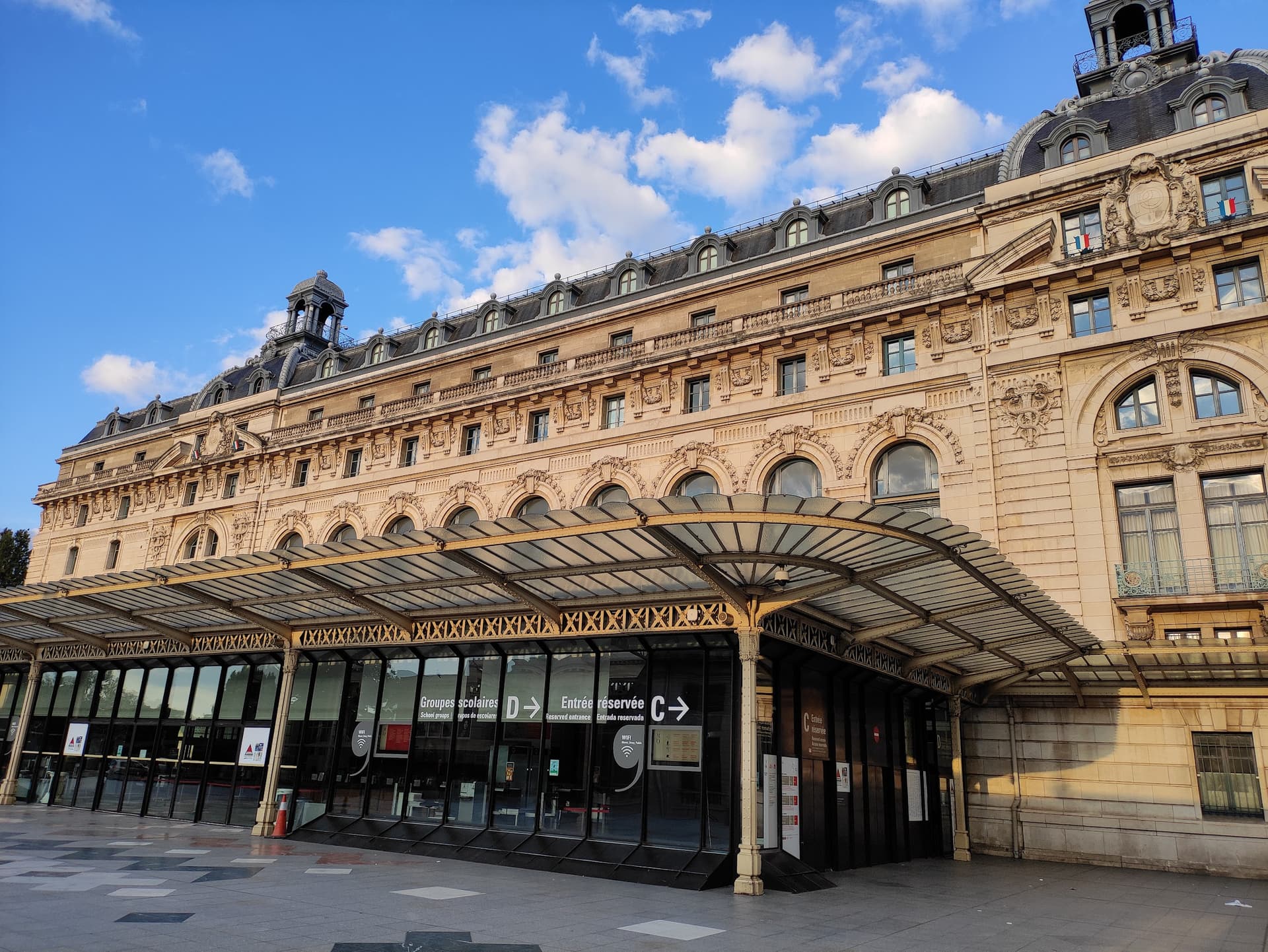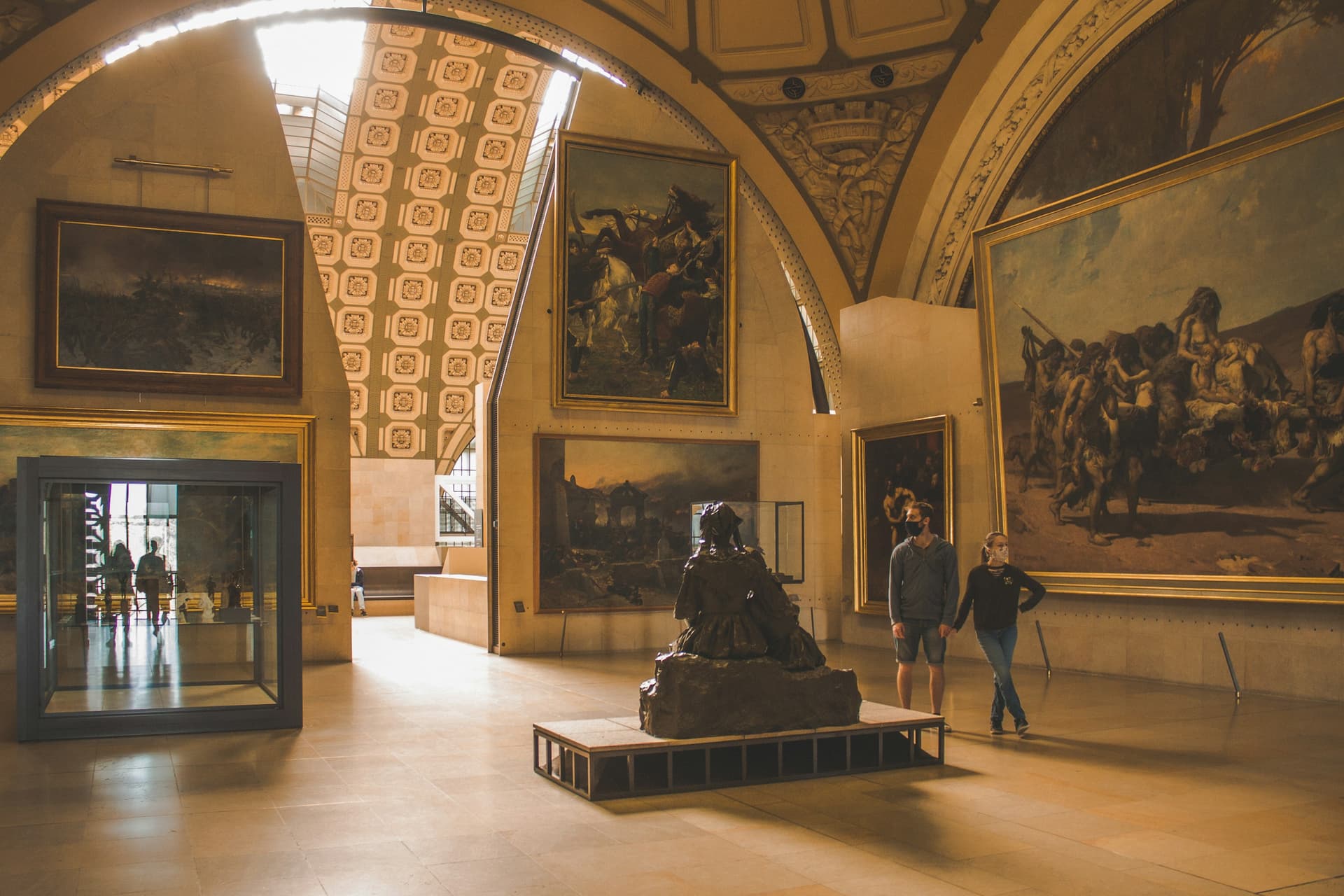Audio GuideMusée d'Orsay
Major 19th- & 20th-century European art collections housed in a monumental, former railway station.
Musée d'Orsay is located on the Left Bank of the Seine in Paris, housed in the grand former Gare d'Orsay, a railway station built between eighteen ninety-eight and nineteen hundred for the nineteen hundred Exposition Universelle. Opened in December nineteen eighty-six by President François Mitterrand, the museum bridges the gap between the Louvre and the Centre Pompidou.
The building boasts stunning architectural features, including a grand central nave and a barrel-vaulted atrium, redesigned by Italian architect Gae Aulenti. The façade is adorned with six bronze sculptures representing continents.
Inside, Musée d'Orsay holds the world’s largest collection of Impressionist and post-Impressionist art. Visitors can admire masterpieces by Claude Monet, Vincent van Gogh, Édouard Manet, Edgar Degas, and others. Highlights include Monet’s The Saint-Lazare Station and Van Gogh’s Starry Night Over the Rhône. Unique installations like a one to one hundred scale model of the Paris Opera add to the experience.
The museum features approximately three thousand artworks from eighteen forty-eight to nineteen fourteen, including paintings, sculptures, furniture, and photography. Special collections and temporary exhibitions, such as A Passion for France, enrich the offerings.
Musée d'Orsay attracts around three point nine million visitors annually, making it one of France’s top attractions. It serves as a cultural heart of Paris, offering art lovers and tourists alike a captivating journey through European art history in a historic and elegant setting.



